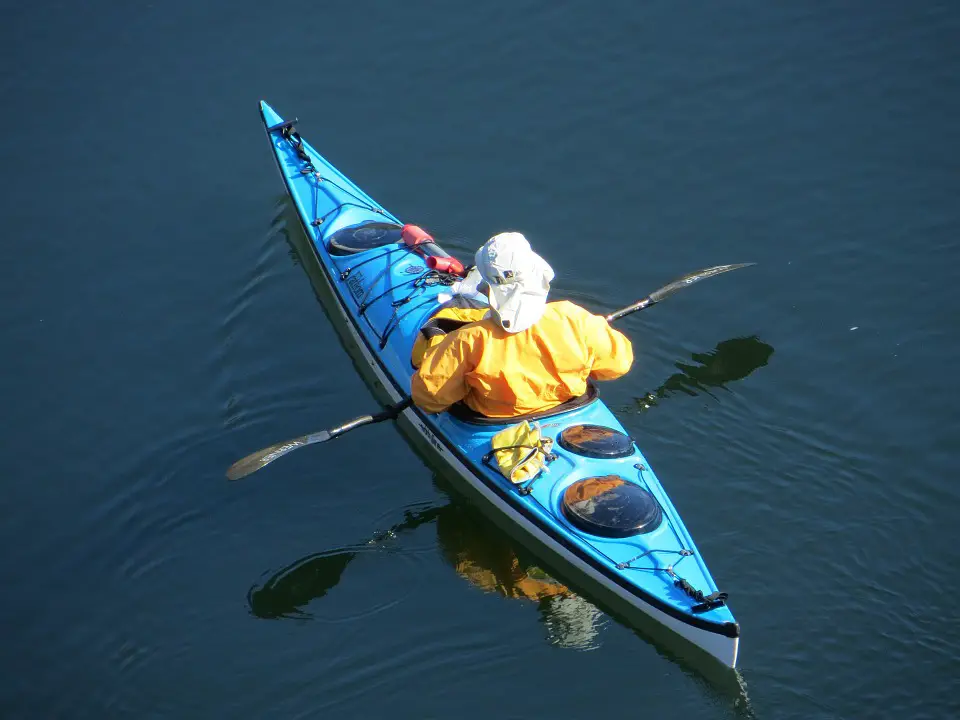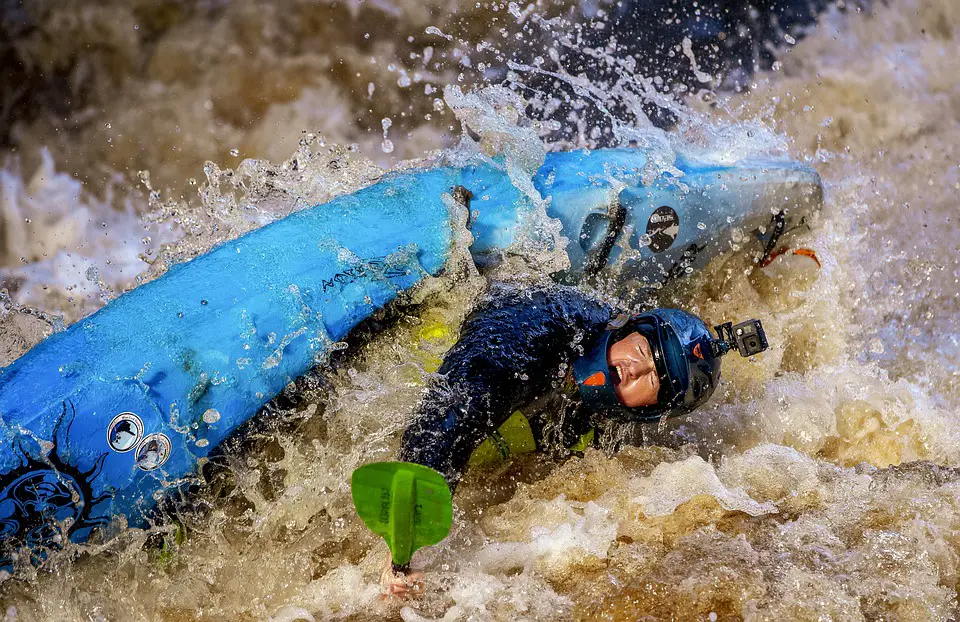Kayaking is a fun water sport that has many challenges, especially life-threatening accidents.
Is it easy to drown in a kayak? The answer is yes. If you have no idea what to do in the middle of nowhere, you can easily drown.

However, with training and experience, it could be difficult for you to drown during kayaking.
The latest kayak models come with life support features you can use during mishaps. However, you are advised to use a life jacket and other safety gear while kayaking.
Table of Contents
Is it easy to drown in a kayak?
It is fun to kayak, but remain conscious and place safety first. However, a kayaker must be aware of the risk involved with kayaking.
Learn about perceived risks and real dangers found in kayaking. Avoid dilemmas by learning about the differences between the risks and dangers.
- Perceived risk: This is an unknown depth or how dangerous a certain situation might be. Perceived risk will not make known the actual risk involved in the task.
- Real danger: This is the actual risk gotten from kayaking not perceptions. The real danger might hold more disaster and a kayaker is most likely going to be faced by it, if something goes wrong on the trip.
Is it easy to drown while kayaking?
An individual is most likely going to get scared and confused while knowing whether it is easy to drown during a kayak adventure.
A beginner would get worried over the matter. The truth to be told is, yes, there are probabilities of getting drowned during kayaking.
Risks that come along with water sports activities are multiple and drowning seems to be among those.
A kayaker could drown if the kayak capsizes while in deep waters. This danger hits more when paddling without preparation or without the skill of swimming.
As a kayaker with a fear of water, then don’t set off kayaking without assistance from a professional, for it could lead to drowning, when without the knowledge of tackling the problem.
A kayaker might come close to another risk that increases the probability of drowning is cold water shock following sudden immersion.
The kayaker could develop a medical condition where the body loses heat faster than it produces. During this condition, quick medical assistance is required.
The kayaker could lose consciousness because of hypothermia and then drown in the water.
Harsh weather conditions and excess sun exposure could also bring such dangerous situations.
Storms, thunder, lightning, heavy wind, heavy rainfall, or a combination of these things would end up making the situation worst and might lead to the kayak capsizing or getting the kayaker off the kayak.
That aside, too much exposure to the sun could cause heatstroke, heat exhaustion, and dehydration which could lead to drowning.
Bad water situations might be harmful. One might never be aware of when the water conditions get bad.
The unpredictable environmental condition will definitely affect the water. High tides could make the kayak capsize.
It could also get difficult to swim in such conditions that are harsh unless equipped with the appropriate gears. Also if you are a good swimmer.
Consumption of alcohol and getting into water is a bad idea. It’s not only the alcohol! Paddling while in an intoxicated state or having some medications could turn fatal.
Hazardous obstacles in the water might also capsize the kayak and drown the kayaker. Get vigilant while paddling and search out for obstacles in the water that could damage the kayak.
Having a kayak adventure at night might be highly dangerous as visibility gets low. The kayaker could hit the kayak on an obstacle that might seem to cause damage.
Wild animals are potential threats a kayaker comes across while kayaking. Crocodiles, sharks, killer geese, or any kind of big aquatic animal might get the kayaker drowned.
The probability is high that the kayaker could get drowned.

How do people drown while kayaking?
All on-the-water tasks bear one certain risk; drowning would be seen as one of those risks.
It is among the most obvious dangers of kayaking, and even more while paddling solo in deep waters unprepared, and also not being a good swimmer.
How do you not drown in kayak?
Tips and tricks to stay safe during kayaking
Overcome the fear of water: A kayaker should get over the fear of water, if in need of having fun during water sports. Learning how to swim could help to ensure safety.
Choose the right water body: pick out a calm and steady water body to enjoy the desire of kayaking.
For a favorable water for water sports one could pick out a slow-moving water. But, endeavor not to head deep into the waters.
Stay close to the water bank to receive immediate aid when it is needed.
Consider the weather conditions: the kayaker should check the weather situation before going out on a trip.
Stormy weather conditions can be dangerous. And also selecting a period when the sun is just above the head is a bad idea.
Put on a light colored cloth and put a shade over the head to avoid heatstroke.
No to intoxication or medication: Don’t consume alcohol or any substance that intoxicates before heading off to the water or while still in the water.
Don’t consume medicines that will get one drowsy, If under medication.
Carry essential gears: A kayaker should use important gears, which would ensure safety. Go along with packaged food items and drinking water, because they might be needed.
Wear a life jacket: putting on life jacket is important, while setting out to the water.
This personal flotation device could prevent the kayaker from drowning even with the absence of the swimming skill.
How many people drown in kayaks?
The U.S. coast guard reports 54 individuals died nationwide in accidents concerning kayaking, with drowning seen as the cause in 43 cases.
There was a total of 113 reported accidents concerned with kayaking, that would mean that nearly half of all the cases were deadly.
Fifty-five kayaking accidents were caused by capsizing.